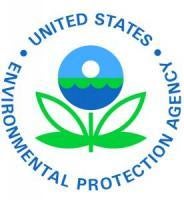Agreement will protect the health of the largest freshwater system in the world
U.S. Environmental Protection Agency Administrator Lisa P. Jackson and Canada’s Minister of the Environment Peter Kent today signed the newly amended Great Lakes Water Quality Agreement at a formal ceremony in Washington, D.C. First signed in 1972 and last amended in 1987, the Great Lakes Water Quality Agreement is a model of binational cooperation to protect the world’s largest surface freshwater system and the health of the surrounding communities.
“Protecting cherished water bodies like the Great Lakes is not only about environmental conservation. It’s also about protecting the health of the families—and the economies—of the local communities that depend on those water bodies for so much, every day,” said Administrator Jackson. “The amended Great Lakes Water Quality Agreement we signed today outlines the strong commitment the U.S. and Canada share to safeguard the largest freshwater system in the world. Our collaborative efforts stand to benefit millions of families on both sides of the border.”
“Joint stewardship of the Great Lakes—a treasured natural resource, a critical source of drinking water, essential to transportation, and the foundation for billions of dollars in trade, agriculture, recreation and other sectors—is a cornerstone of the Canada-United States relationship,” said Minister Kent. “The Great Lakes Water Quality Agreement supports our shared responsibility to restore and protect this critical resource, and builds on 40 years of binational success.”
The revised agreement will facilitate United States and Canadian action on threats to Great Lakes water quality and includes strengthened measures to anticipate and prevent ecological harm. New provisions address aquatic invasive species, habitat degradation and the effects of climate change, and support continued work on existing threats to people’s health and the environment in the Great Lakes Basin such as harmful algae, toxic chemicals, and discharges from vessels.
The overall purpose of the Agreement is “to restore and maintain the chemical, physical and biological integrity of the waters” of the Great Lakes and the portion of the St. Lawrence River that includes the Canada-United States border. Both governments sought extensive input from stakeholders before and throughout the negotiations to amend the Agreement. Additionally, the amended Agreement expands opportunities for public participation on Great Lakes issues.
The amended agreement sets out a shared vision for a healthy and prosperous Great Lakes region, in which the waters of the Great Lakes enhance the livelihoods of present and future generations of Americans and Canadians.
To view the text of the agreement: http://www.binational.net/home_e.html



 />i
/>i

